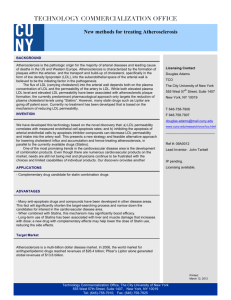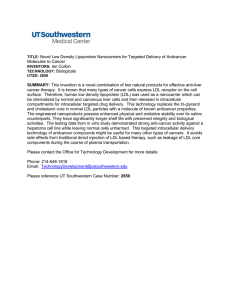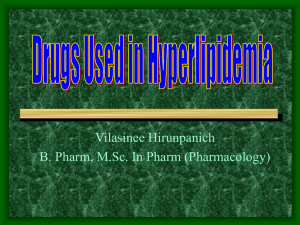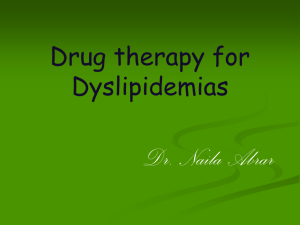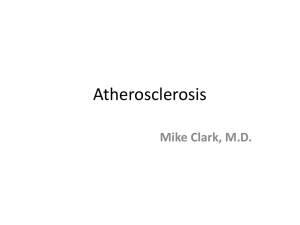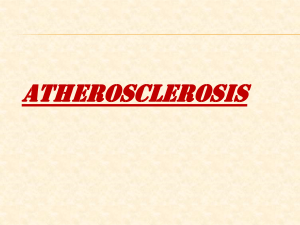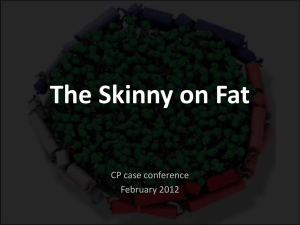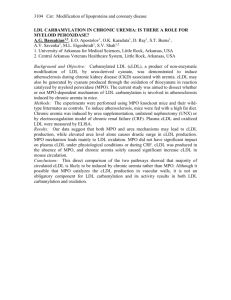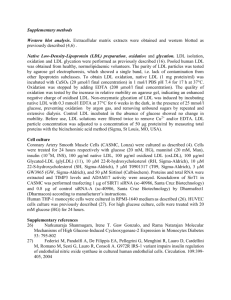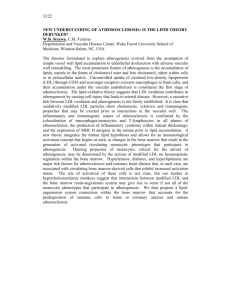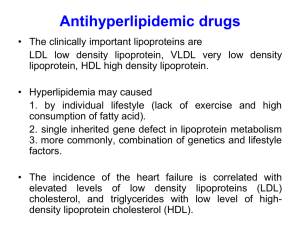Atherosclerosis 2007-1, 2007-2
advertisement
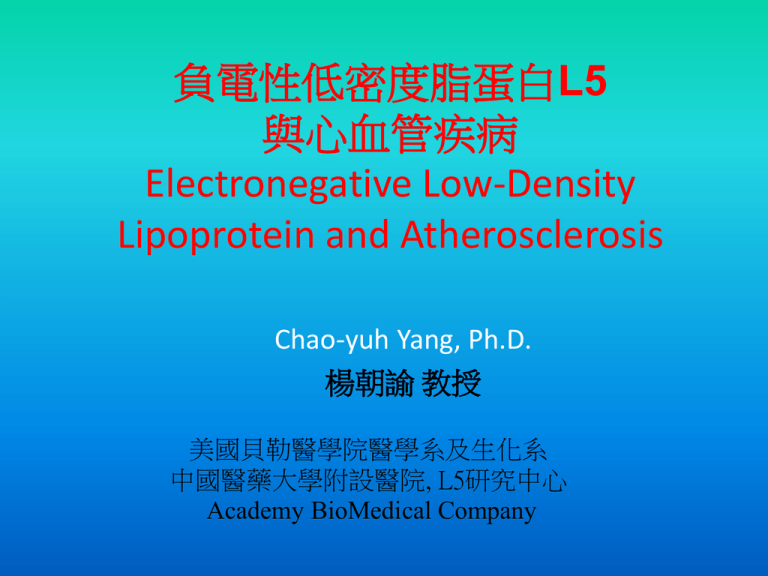
負電性低密度脂蛋白L5 與心血管疾病 Electronegative Low-Density Lipoprotein and Atherosclerosis Chao-yuh Yang, Ph.D. 楊朝諭 教授 美國貝勒醫學院醫學系及生化系 中國醫藥大學附設醫院, L5研究中心 Academy BioMedical Company Atherosclerosis and low-density lipoproteins • Atherosclerosis is the leading cause of death in the western country. • Atherosclerosis causes significant morbidity and mortality, and associates with enormous economic impact. • Increased levels of low-density lipoproteins (LDLs) are associated with increased risk for development of atherosclerosis. 1. 1983 Brown and Goldstein et. al reported in New Engl. J. Med: Defective lipoprotein receptors and atherosclerosis. 2. 1985 Brown and Goldstein et. al reported structure for lipoprotein receptors in Science and reported receptor-mediated endocytosis: concepts emerging from the LDL receptor system in Ann. Rev. Cell Biol.. ApoB-100 structure in LDL ApoB-100 Structure in LDL Steps in atherogenesis Stages of atherosclerosis Pathologic processes leading to the development of an atherosclerotic plaque The three layers of the arterial wall Atherosclerosis Heart disease begins when cholesterol, fatty material, and calcium build up in the arteries, a process known as atherosclerosis. HPLC of Cu ox-apoB tryptic peptides Electrospray-MS of Cu ox-peptide Purified Cu ox-peptides Location of Cu ox AA residues on LDL Summary ----in vitro ox-LDL 1. 2. 3. Copper ox-LDL results in a) formation of carbonyl group at the Trp residues of apoB-100, b) formation of sulfonic acid, c) formation of HNE-His adducts Exposure of LDL to HOCl or MPO in vitro generates DNPH-reactive sites on the apoprotein (Cys, Trp, Lys) Oxidation of LDL by MPO is remarkably more selective than is oxidation by HOCl in free solution, suggesting the formation of some form of enzyme-substrate complex between MPO and LDL Conclusion ---- in vitro ox-LDL 1. 2. Different mechanisms of LDL oxidation can be distinguished by specific characteristic products of oxidation of the apoprotein Most of the modified residues identified so far are incorporated in tryptic peptides shown to reside on the surface of the LDL particle Oxidative Modified LDL In vitro a. Metal-catalyzed oxidation: copper- or iron-oxidation b. HOCl-mediated oxidation c. Enzyme-mediated oxidation: myeloperoxidase, lipoxygenases d. Reaction of LDL with lipid-derived aldehydes, e. Cell-mediated oxidative modification In vivo a. Circulating LDL b. Atheroma LDL What does L5 do to us? inhibits EC proliferation induces EC apoptosis induces EC expression of adhesion molecules induces monocyte-EC adhesion induces VSMC proliferation inhibits EPC differentiation Circulation 2003; ATVB 2003; Curr Opin Lipidol 2004; Curr Vasc Pharmacol 2004; Atherosclerosis 2007-1, 2007-2; Endocrinology 2007; JLR 2004, 2007, 2008; Diabetes 2008; Circ Res 2006, 2008, 2009-1, 2009-2 Relation of cholesterol to coronary death LDL-C and HDL-C impact on CHD risk Risk ratios for CHD of total cholesterol and HDL cholesterol Categories of Risk Factors Major Risk Factors (Exclusive of LDL Cholesterol) Life-Habit Risk Factors Emerging Risk Factors Lipid and Lipoprotein Level Related to health condition LDL Cholesterol (mg/dL) Lipid and Lipoprotein Level Related to health condition Total Cholesterol (mg/dL) HDL Cholesterol (mg/dL) Lipid and Lipoprotein Level Related to health condition Serum Triglycerides Causes of Low HDL Cholesterol (<40 mg / dL) Causes of Elevated Triglycerides (> 150 md/dL) Therapeutic Lifestyle Changes in LDL-Lowering Therapy Cholesterol content (mg/3 oz, 85 g) and total fat content (g/3 oz) of lean meats and organs (cooked) Cholesterol content (mg/3 oz) and total fat content (g/3 oz) of poultry (cooked) Cholesterol content (mg/3 oz) and total fat content (g/3 oz) of fish and shellfish (cooked) Cholesterol content (mg/3 oz) and total fat content (g/3 oz) of eggs and dairy products (cooked) Components of nutritionally balanced cholesterol-lowering diet Thank you for your attention
